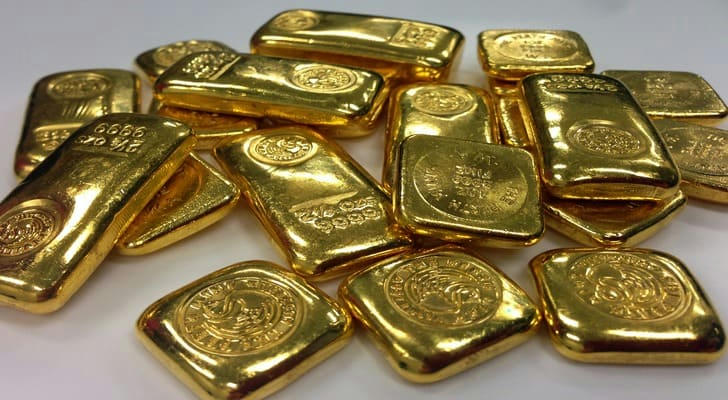The Safe Haven Appeal of Gold: Investment Strategies Amid Global Economic Uncertainty
In a world shaken by inflation spikes, political unrest, and market volatility, investors are turning their attention back to a timeless asset: gold. Amid the uncertainty triggered by global supply chain disruptions, central bank policy shifts, and geopolitical tensions, gold’s role as a safe haven is once again in focus. This enduring asset continues to serve as both a hedge and a portfolio stabilizer in an increasingly unpredictable financial landscape.

Gold’s Performance in Times of Crisis
Historical data shows that gold has repeatedly demonstrated resilience during economic downturns. During the 2008 global financial crisis, gold prices rose by over 25% between 2008 and 2009, while equity markets plummeted. Similarly, in 2020, as the COVID-19 pandemic triggered global lockdowns and economic contraction, gold hit an all-time high of over $2,070 per ounce in August of that year.
These spikes are not coincidental. In moments of crisis, when trust in traditional financial systems wanes, gold becomes a go-to asset due to its intrinsic value and limited supply. Its negative correlation with equities makes it an effective hedge during periods of market stress.
Inflation Hedge Backed by Real-World Data
Gold has long been considered a hedge against inflation, and recent data supports this claim. According to the World Gold Council, gold delivered an average annual return of 10% from 1971 (when the gold standard ended) to 2022, outperforming inflation in many developed economies. During the high inflationary period of the late 1970s, for instance, gold prices increased more than eightfold as consumer price indices surged.
In 2022, U.S. inflation hit a 40-year high at 9.1% in June. During the same year, despite aggressive interest rate hikes by the Federal Reserve, gold prices remained relatively stable, finishing the year with a modest decline of about 0.3%. This performance, particularly in comparison to double-digit losses in major stock indices, highlighted gold’s role in wealth preservation.
A Core Component in Diversified Portfolios

Modern portfolio theory emphasizes diversification as a strategy to reduce overall investment risk. Gold plays a unique role here. According to a 2022 analysis by Bloomberg, portfolios with a 5%–10% allocation to gold saw improved risk-adjusted returns compared to those without any gold exposure, especially during periods of high market volatility.
Gold’s low correlation with traditional assets—0.12 with U.S. equities and -0.22 with the U.S. dollar over the past 20 years—helps cushion portfolio losses when other assets underperform. As a result, financial advisors increasingly recommend a strategic allocation to gold, particularly during periods of macroeconomic uncertainty.
Central Banks Reinforce Gold’s Strategic Value
Another indicator of gold’s safe haven appeal is the purchasing behavior of central banks. According to the World Gold Council, 2022 saw the highest level of central bank gold buying in over five decades, with more than 1,136 metric tons added to reserves globally. Countries such as China, Turkey, and India were among the top buyers, signaling a shift toward reducing dependence on the U.S. dollar and increasing holdings in tangible assets.
This trend continued into 2023 and 2024, suggesting that sovereign institutions also view gold as a critical component of long-term financial resilience. These moves have a stabilizing effect on the gold market and help anchor long-term value.
Gold Investment Vehicles: Accessibility and Flexibility
While traditional gold investment often involved purchasing physical bullion or coins, modern markets offer more accessible and flexible options. Gold ETFs (Exchange-Traded Funds) have become one of the most popular instruments for gaining exposure to gold without dealing with storage or insurance.
For example, SPDR Gold Shares (GLD), the largest gold ETF by assets under management, has consistently attracted strong investor interest. By the end of 2023, it held more than 900 metric tons of gold. Gold mining stocks, mutual funds, and even blockchain-based gold tokens now provide investors with a variety of options tailored to their risk preferences and investment horizons.
Timing and Strategic Allocation
While gold is not typically associated with rapid gains, its strategic value lies in capital preservation and risk management. Investment experts often recommend holding between 5% to 15% of a diversified portfolio in gold, depending on market conditions and investor objectives.
Timing also plays a key role. Gold tends to perform well when real interest rates are low or negative—situations where inflation outpaces nominal interest rates. With many central banks still walking a tightrope between controlling inflation and supporting growth, the environment remains favorable for gold in the medium term.

Conclusion: A Resilient Choice in Uncertain Times
Amid the complex challenges of the global economy—ranging from debt accumulation to geopolitical fragmentation—gold continues to shine as a symbol of safety. Its historical performance, inflation-hedging properties, and ability to enhance portfolio stability make it a prudent choice for investors seeking long-term security.
While no investment is entirely risk-free, gold’s consistent track record and growing institutional demand affirm its place as a core asset during turbulent times. For those navigating an era of uncertainty, gold is not just a relic of the past—it is a forward-looking strategy for the future.
